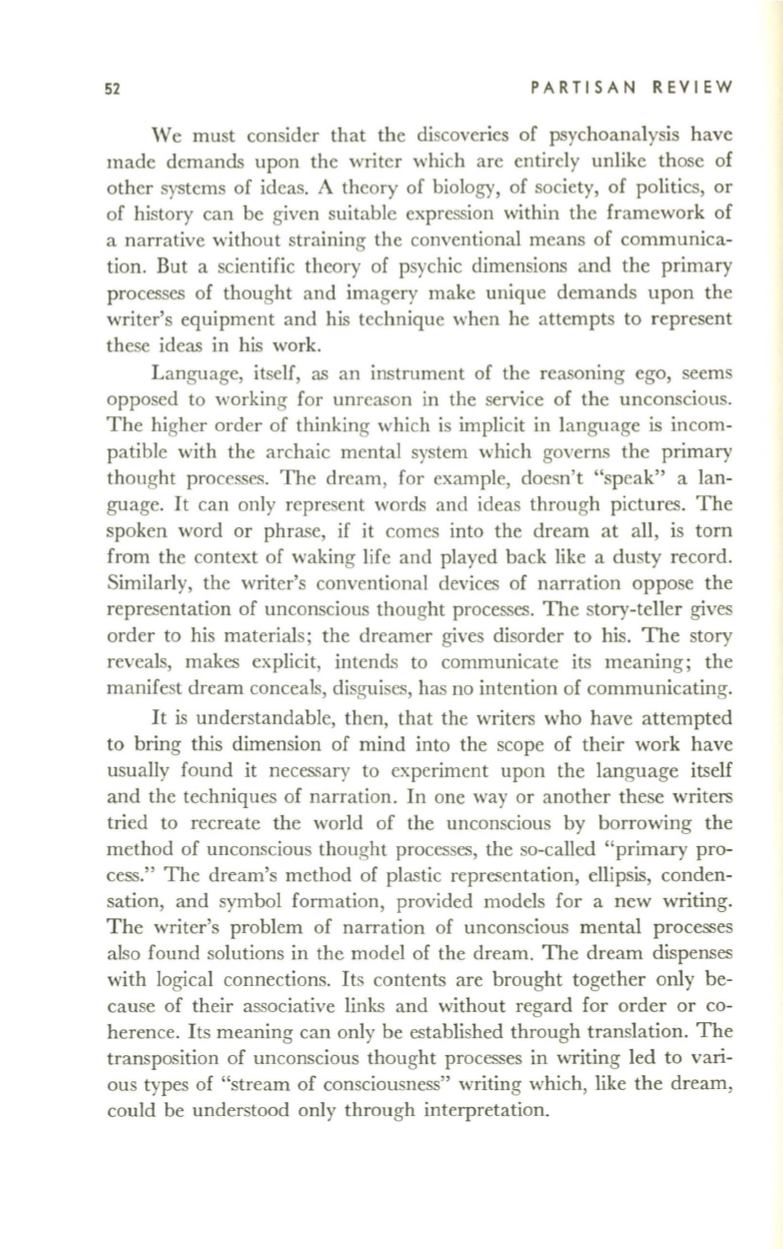
52
PARTISAN REVIEW
We must consider that the discoveries of psychoanalysis have
made demands upon the writer which are entirely unlike those of
other systems of ideas. A theory of biology, of society, of politics, or
of history can be given suitable expression within the framework of
a narrative without straining the conventional means of communica–
tion. But a scientific theory of psychic dimensions and the primary
processes of thought and imagery make unique demands upon the
writer's equipment and his technique when he attempts to represent
these ideas in his work.
Language, itself, as an instrument of the reasoning ego, seems
opposed to working for unrcason in the service of the unconscious.
The higher order of thinking which is implicit in language is incom–
patible with the archaic mental system which governs the primary
thought processes. The dream, for example, doesn't "speak" a lan–
guage. It can only represent words and ideas through pictures. The
spoken word or phrase, if it comes into the dream at all, is tom
from the context of waking life and played back like a dusty record.
Similarly, the writer's conventional devices of narration oppose the
representation of unconscious thought processes. The story-teller gives
order to his materials; the dreamer gives disorder to his. The story
reveals, makes explicit, intends to communicate its meaning; the
manifest dream conceals, disguises, has no intention of communicating.
It is understandable, then, that the writers who have attempted
to bring this dimension of mind into the scope of their work have
usually found it necessary to experiment upon the language itself
and the techniques of narration. In one way or another these writers
tried to recreate the world of the unconscious by borrowing the
method of unconscious thought processes, the so-called "primary pro–
cess." The dream's method of plastic representation, ellipsis, conden–
sation, and symbol formation, provided models for a new writing.
The writer's problem of narration of unconscious mental processes
also found solutions in the model of the dream. The dream dispenses
with logical connections. Its contents are brought together only be–
cause of their associative links and without regard for order or co–
herence. Its meaning can only be established through translation. The
transposition of unconscious thought processes in writing led to vari–
ous types of "stream of consciousness" writing which, like the dream,
could be understood only through interpretation.


